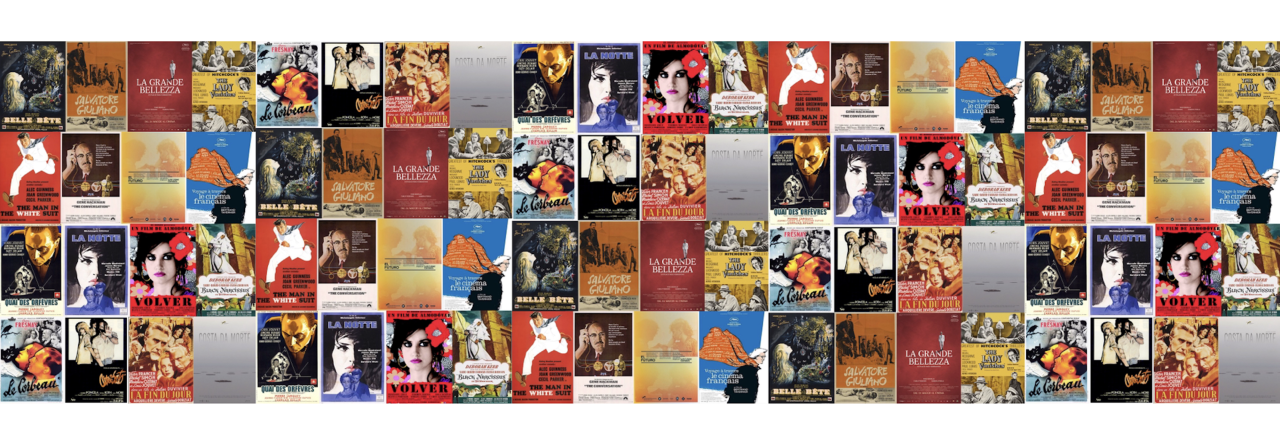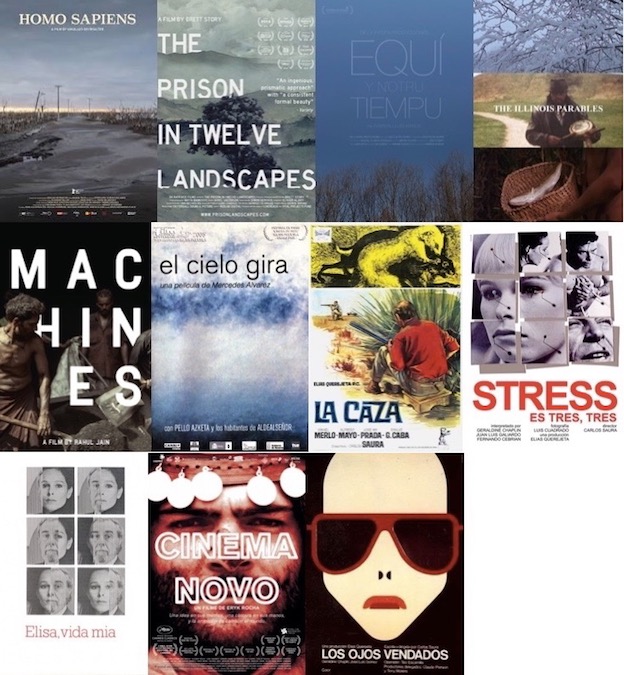
Director: Carlos Saura
Screenplay: Angelino Fons, Carlos Saura
Cast: Geraldine Chaplin, Juan Luis Galiardo, Fernando Cebrián, Porfiria Sanchíz, Humberto Sempere.
Synopsis: A husband’s jealous paranoia poisons his relationships with his wife and a family friend when the three take a road trip into the Spanish countryside.
This is one of those films where I’ve struggled to find a way ‘in’ to writing about it. Not because there’s nothing there to discuss – for example, the fractures and tensions in the social identities of the Spanish bourgeoisie as they grappled with the contradictions between urban modernity and the social/religious/familial ideals promoted by the Franco regime – but because I didn’t connect with it, and therefore feel that I have little to say about the elements Saura was trying to weave into his fifth film. I think that it’s one of his slighter works, although it gives further evidence of both his refusal to be pigeonholed and willingness to experiment. Its lack of reputation is probably in part because it is virtually impossible to see – a couple of years ago it was released as part of an expensive French boxset of Saura’s early films but wasn’t available on its own. I found it on YouTube with English subtitles in 2016 (since taken down) and although I managed to buy an individual French DVD early in 2017 (French subs only), I think I bought it from someone who had decided that they could make more money by selling the films secondhand individually rather than selling the collection as a boxset because I haven’t since seen the film listed anywhere on its own. So if you spot it online, watch it before it vanishes again.
Saura apparently felt that Peppermint frappé‘s narrative was too conventional (in an A to B to C sense) and Stress es tres, tres was his experimentation with something more free-flowing, using a road trip to set up a series of scenarios that don’t need to be held together by a concrete plot. Taking place over the course of a day, married couple Fernando (Fernando Cebrián) and Teresa (Geraldine Chaplin) travel with friend Antonio (Juan Luis Galiardo) by car through the countryside to the Almería coast, with the aim of visiting the site of a project that Fernando is trying to persuade Antonio to oversee. From the start, tensions between the men are apparent (although somewhat one-sided because the easy-going Antonio isn’t easily riled) and there are signs that all is not well between husband and wife either (Fernando taking a drag of Teresa’s cigarette without asking leads her to immediately stub it out when he hands it back) – the thread that ties the various scenes together is Fernando’s jealous paranoia and the increasing sense that violence is imminent.
That this jealousy creates different ‘versions’ of Teresa – in the sense that Fernando interprets her actions in a manner that contradicts the reality, or imagines her behaving otherwise – also connects to the idea of a trilogy with Peppermint frappé and La madriguera. Via Fernando’s voyeurism (spying through a crack in the bedroom door when they stop off at a farm owned by his family), we see what initially appears to be a confrontation between Teresa and an unseen second person – confirming Fernando’s suspicions of an affair – but actually turns out to be her rehearsing how to confront her husband about his behaviour. As Fernando bursts in, the camera reveals that Teresa is looking in the mirror while she practises what she wants to say, and the use of mirrors in combination with an acknowledged performance (by which I mean that the character is aware that they are performing, whether there is an audience beyond just the camera or not) is a recurring motif in Saura’s later films.
So Chaplin is afforded another opportunity to play versions of the same woman (and switches from blonde to brunette again as well) but the difference here is that Teresa perhaps has more agency than the women in Peppermint frappé; although some ‘versions’ of Teresa only exist in the eye of the beholder (i.e. her husband), she nonetheless can be seen to choose how she presents herself on other occasions (e.g. practising in the mirror – when she pointedly states “I am not an object” – or the scene on the beach where she and Antonio humorously consider how much he would pay for her). Maybe a different way of viewing Teresa is to take her to be multi-faceted; distinct aspects of her personality – rather than delineated ‘versions’ – come to the fore at different moments of the narrative. Chaplin is not yet the lead (this is Fernando’s story) but it feels like she exerted influence over the development of her character, and managed to create a woman who has more to her than simply how she is seen by men.

